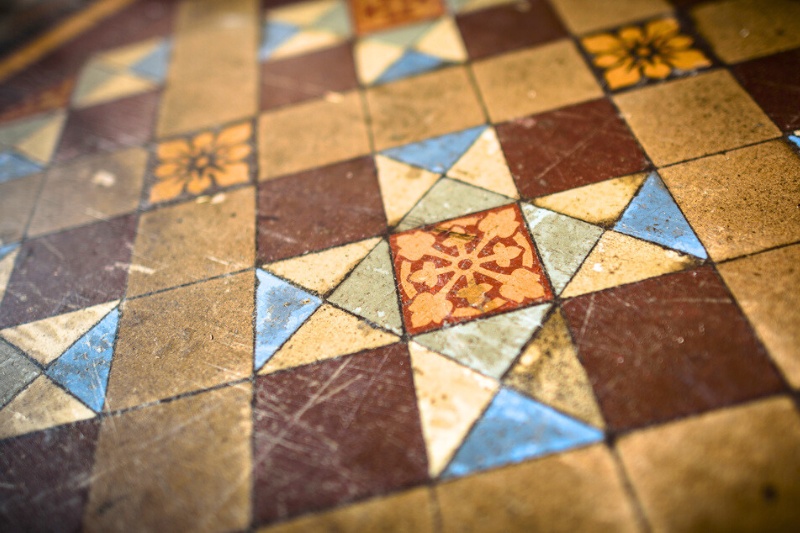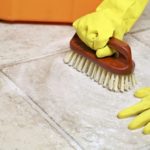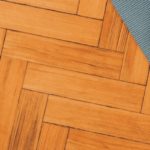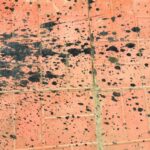Victorian floor tiles are a timeless and elegant addition to any home. But over time, they can become dirty and dull, losing their original charm.
Knowing how to clean Victorian floor tiles safely and effectively to restore their beauty is key.
So, if you’re ready to get your classic floor tiles in pristine condition and preserve them for years to come, here’s how…
Maintenance Cleaning for Restored Floor Tiles
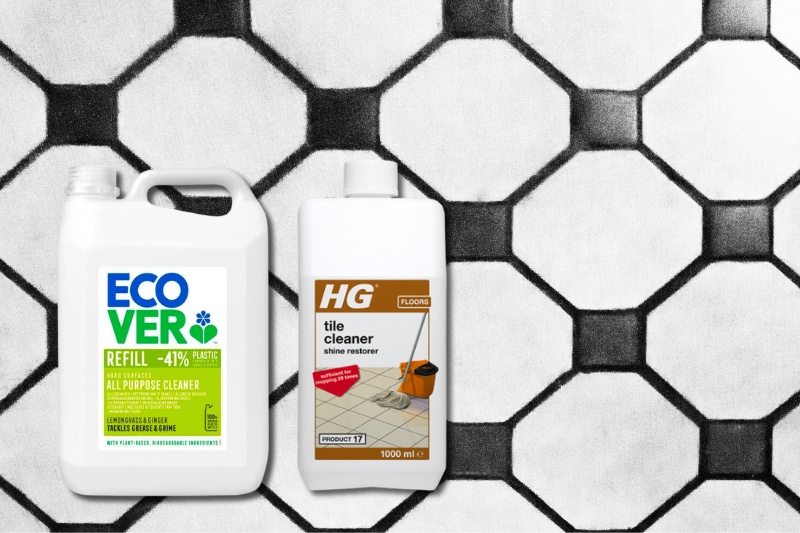
If you’ve had your Victorian tiles restored and want to keep them looking their best, you should sweep the floor regularly and conduct maintenance cleans 2-3 times a month.
This will help to stop grime from building up on the surface. The simplest way to do so is as follows:
- Start by vacuuming the floor to remove any loose debris. This will prevent you from smearing extra dirt and potentially abrasive grit around during the cleaning process.
- Then fill a bucket with warm water and mix in half a cup (50ml) of HG Tile Cleaner Shine Restorer. Or you can dilute 1-2 capfuls of a mild all-purpose cleaner like Ecover All Purpose Cleaner Lemongrass & Ginger instead. However, you should avoid bleach and other strong detergents that could break down the tile’s protective coating.
- Next, dip a clean mop into the solution, wring it out well and use it to clean the tiles. Work from one end of the room to the other, rinsing the mop frequently as you go. Just be careful not to flood the tiles with excess water as this could cause them to lift.
- If you spot any stubborn dirt that didn’t lift off with the mop, scrub it gently with a non-scratch scourer. Don’t use coarse wire brushes as they will scratch the tile’s surface.
- Finally, refill the bucket with clean water, then rinse the floor to make sure all chemical residue is removed. Dry with lint-free microfibre cloths or a clean microfibre flat-head mop.
How to Restore or Deep Clean Victorian Floor Tiles
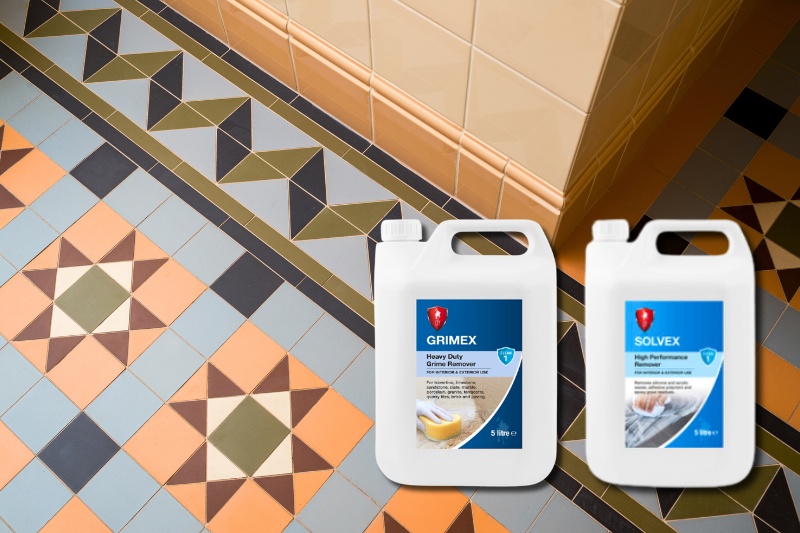
Alternatively, if you’ve just uncovered your period property’s 19th century floor tiles under old carpet or lino, they’ll need to be deep cleaned.
The same goes if they’ve become stained over time or perhaps marked during decorating.
In these cases, you should follow the steps below for how to clean Victorian floor tiles thoroughly:
- Firstly, scrape off any dried-on paint or other stuck-on grime with a plastic scraper.
- Next, protect your skirting boards from the cleaning chemicals with several inches of paint-safe, low-tack masking tape.
- Then, apply a generous layer of LTP Solvex to strip the tiles of any old adhesive or sealant. Use the product neat and brush it on with a clean paintbrush. Leave it to soak in for half an hour, then use a scourer or stiff brush to scrub off the softened residue.
- Next, dilute 1 part LTP Grimex to 3 parts warm water in a bucket. Then use a mop to apply it to the tiles. If needed, scrub the surface with a clean scourer or stiff brush to work out any engrained dirt. Or you could hire a rotary machine to save time and effort.
- If you have a wet-dry vacuum cleaner, use it to suck up the dirty water. Otherwise, mop up as much as you can. Then rinse the floor well with clean water to neutralise the chemicals applied and dry as above.
- Leave the tiles to fully dry for at least 12 hours – ideally 24 – then apply a new layer of sealer. HG Tile Impregnating Protector and Tile Doctor Seal & Go are both great options designed to revive and protect your tiles after cleaning. Apply either one neat with a clean paint roller or large sponge, building up 2-3 coats as directed.
And that’s how to clean Victorian floor tiles and restore them to their former glory! Explore In The Wash further for more household cleaning and laundry tips.

A proud Yorkshire lass with a love for movies, music and cosy nights in! Once a self-confessed avoider of cleaning, she’s always on the lookout for new ways to make household chores as quick and simple as possible.
